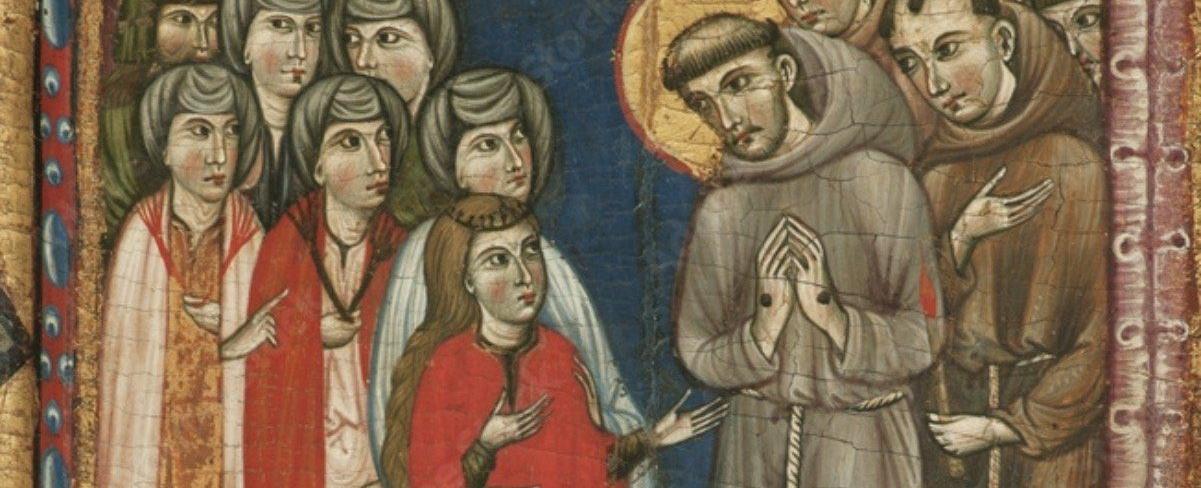The Heart of Penance: Rediscovering the Lay Franciscan Journey

What does it really mean to live a penitential life today? For members of the Secular Franciscan Order—or anyone drawn to Franciscan spirituality—this question echoes through centuries of tradition, personal devotion, and communal renewal. St. Francis and the Third Order: The Franciscan and Pre-Franciscan Penitential Movement offers a rich historical and theological exploration of this path, grounding the contemporary Third Order in its earliest roots.

Long before Saint Francis walked the hills of Assisi, there existed a vibrant penitential movement—lay men and women, married and single, drawn to a life of simplicity, prayer, and Gospel-centered living. These early penitents were not monastics, yet they felt called to more than a conventional lay life. They sought to follow Christ through personal conversion, works of mercy, and public witness—often in tension with both ecclesiastical and societal norms.
Francis of Assisi entered this tradition not to start something new, but to renew something ancient. Following his vision at San Damiano, Francis embraced the penitential way of life with singular intensity. What he brought was not just spiritual fervor, but a contagious joy and clarity of purpose—centered on radical Gospel living. His charisma gave new energy to the existing movement and eventually inspired what would become the Third Order of Saint Francis—a lay expression of Franciscan life open to people of all walks of life.
This book explores that evolution with depth and care, drawing heavily on the work of Brother Raffaele Pazzelli, whose scholarship uncovers the biblical and ecclesial roots of this spiritual path. Grounding his analysis in early Franciscan sources—particularly Francis’s Exhortations to the Brothers and Sisters of Penance (commonly called the Letters to the Faithful) and the foundational rules that shaped the Order of Penance—Pazzelli doesn’t just chart historical milestones; he traces the heartbeat of a movement shaped by Francis and Clare, inviting readers to see penance not as dour self-denial, but as a dynamic way of life rooted in love, reconciliation, and service.
Since the publication of this book in 1989, the field of Franciscan studies has been shaped by several landmark editorial and translation projects—most notably the three-volume Francis of Assisi: Early Documents (FA:ED), which brought the major sources on Francis into wide circulation in English during the 1990s and 2000s. These translations provided unprecedented access to Francis’s writings and early biographies, shaping how scholars, religious, and laypeople understood his message. However, even these translations—and the chronological and thematic order they presented—have since been revisited by more recent scholarship.
For example, Studies in Early Franciscan Sources, Volume 1: The Writings of Francis of Assisi: Letters and Prayers (2011, edited by Michael W. Blastic, OFM; Jay M. Hammond, PhD; and J.A. Wayne Hellmann, OFM Conv.) emerged as a scholarly response to both earlier historiographies—including Pazzelli’s—and to the FA:ED volumes. It offers a more granular, critical, and text-focused reassessment of key writings, including the Earlier Exhortation and Later Exhortation to the Brothers and Sisters of Penance, the Letter to the Clergy, and several autograph pieces. Notably, Michael Cusato in Chapter 3 of Studies in Early Franciscan Sources, Volume 1, digs deeply into the compositional history of the Letters to the Faithful and their evolving role in defining lay penitential identity. In doing so, the volume updates the status quaestionis—the current state of scholarly understanding—for each text, revising both chronology and editorial assumptions.
For instance, the dating and structure of the Exhortations—i.e., Letters to the Faithful—have been substantially revised. Earlier scholars, including Kajetan Esser and Pazzelli, often assumed that the Later Exhortation (the shorter text) came first, later expanded into the Earlier Exhortation (the longer text). However, Cusato incorporates newer research that suggests the Earlier Exhortation may in fact predate the Later, with both likely composed around 1220–1221. The Later Exhortation, in this view, represents a pastoral distillation of the earlier text—a formal and focused program for lay penitents. Notably, Pazzelli himself had already begun to question this sequencing in a 1987 note in Analecta TOR, and the 2011 volume tracks how that reconsideration has continued to develop.
Other textual shifts include a revised dating for the Letter to the Clergy, based on the work of Jan Hoeberichts, and deeper insights into the autograph writings of Francis—such as the chartula containing the Praises of God and Blessing for Brother Leo. Scholars such as Attilio Bartoli Langeli have re-evaluated the physical history of these texts, leading to a richer understanding of how they were composed, transmitted, and preserved.
Taken together, this newer scholarship doesn’t undermine the value of Pazzelli’s work—it enriches it. St. Francis and the Third Order remains an accessible, insightful gateway into the spiritual and historical world of Franciscan penance. But it should be read today in conversation with the larger body of critical scholarship that has grown around the early Franciscan sources. That evolving conversation continues to illuminate what it means to live as a “brother or sister of penance” in our own time.
Importantly, the book doesn’t treat the Third Order as a relic of the past. On the contrary, it calls today’s Franciscans—especially lay people—to re-engage with the profound ideals at the heart of their vocation. Penance, in the Franciscan tradition, is not primarily about guilt or austerity. It’s about ongoing conversion, a willingness to be changed by grace, and a commitment to live the Gospel in everyday life—with humility, courage, and joy.
Whether you’re a longtime member of the Third Order, a spiritual seeker, or simply curious about Franciscan heritage, this book offers more than historical insight. It’s an invitation to rediscover a way of being in the world—one that is as needed today as it was in Francis’s time.
Thanks to the Commission on the Franciscan Intellectual-Spiritual Tradition (CFIT), this important work—originally published in 1989 and out of print—has been made available again in digital form. CFIT’s commitment to recovering and sharing foundational texts like this ensures that the richness of the Franciscan tradition continues to inspire new generations of seekers, scholars, and committed laypeople alike.
Main image: Attributed to the Master of St. Clare, this panel depicts St. Francis and his brothers welcoming St. Clare to the Porziuncola on the evening that she ran away from home (detail). 1283, Assisi, Basilica of St. Clare.
Danny Michaels
Chief Technology Officer
Dr. Daniel T. Michaels (“Danny”) is a historical theologian and digital humanist specializing in Franciscan history and spirituality. As Chief Technology Officer at the National Institute for Newman Studies, he leads international teams developing digital tools for archives, museums, libraries, and heritage sites. A longtime contributor to CFIT, Dr. Michaels has pioneered digital humanities initiatives for over two decades—most recently Rednal, a cutting-edge platform for digital collections, AI-enhanced research, and archival preservation.

